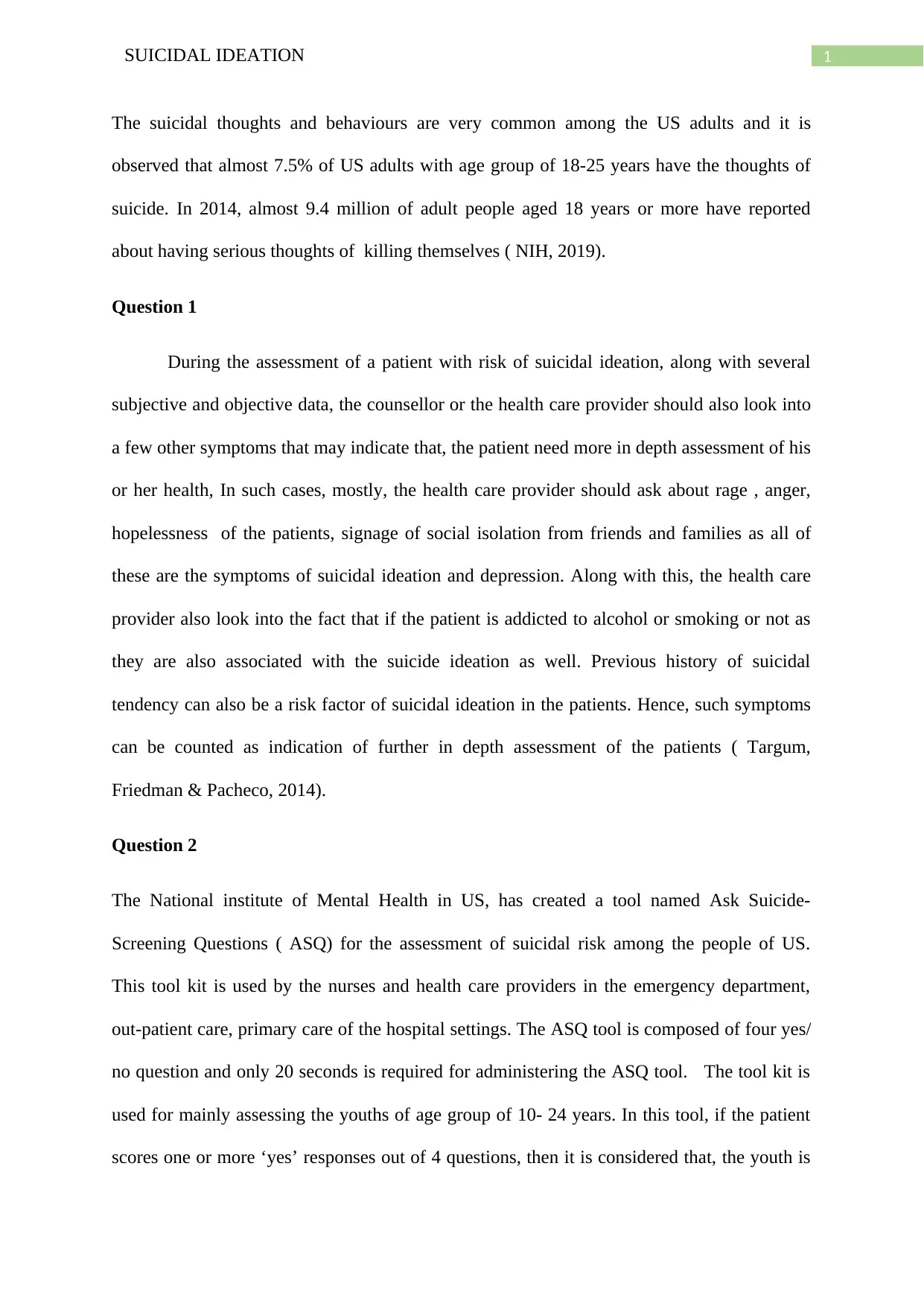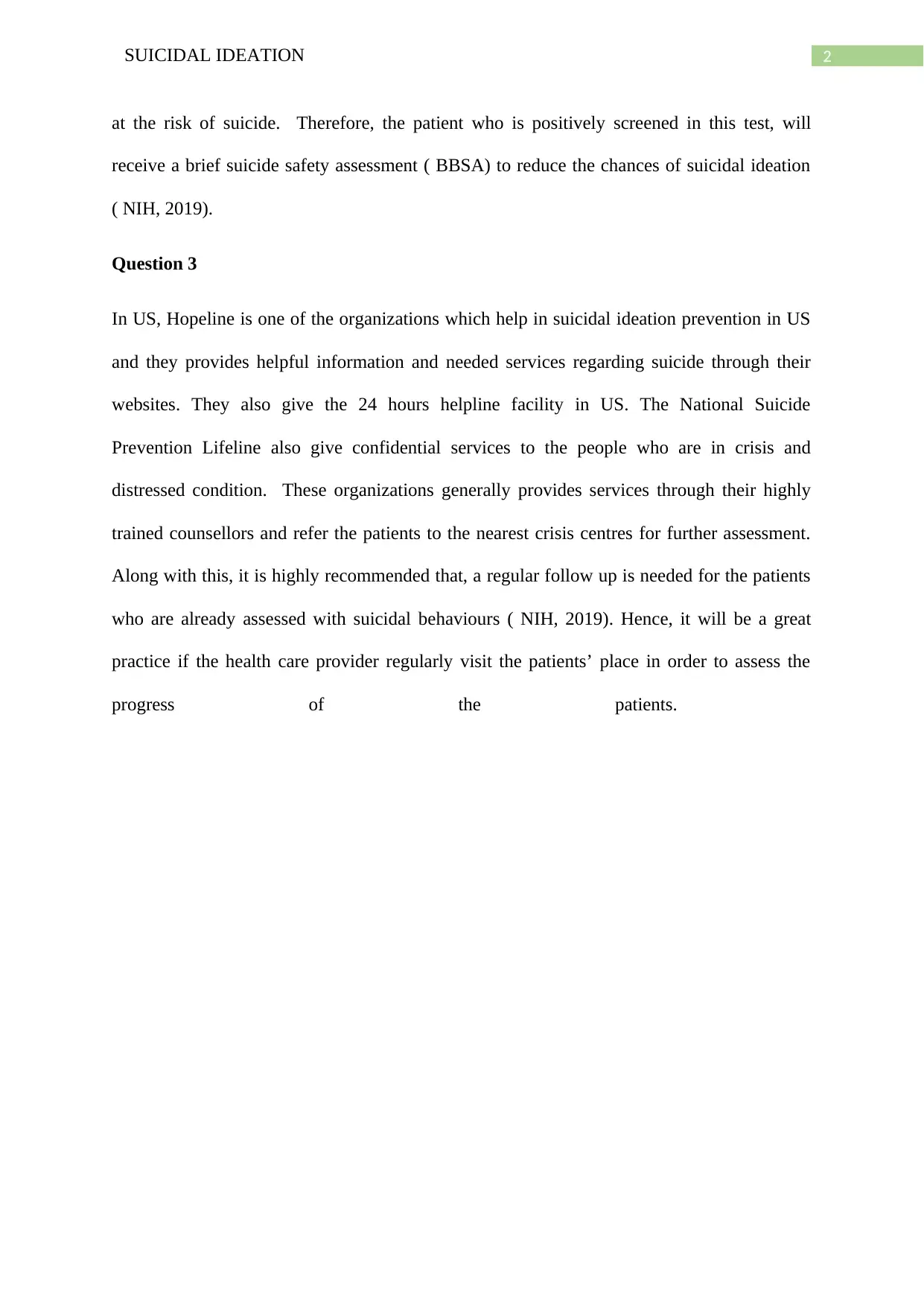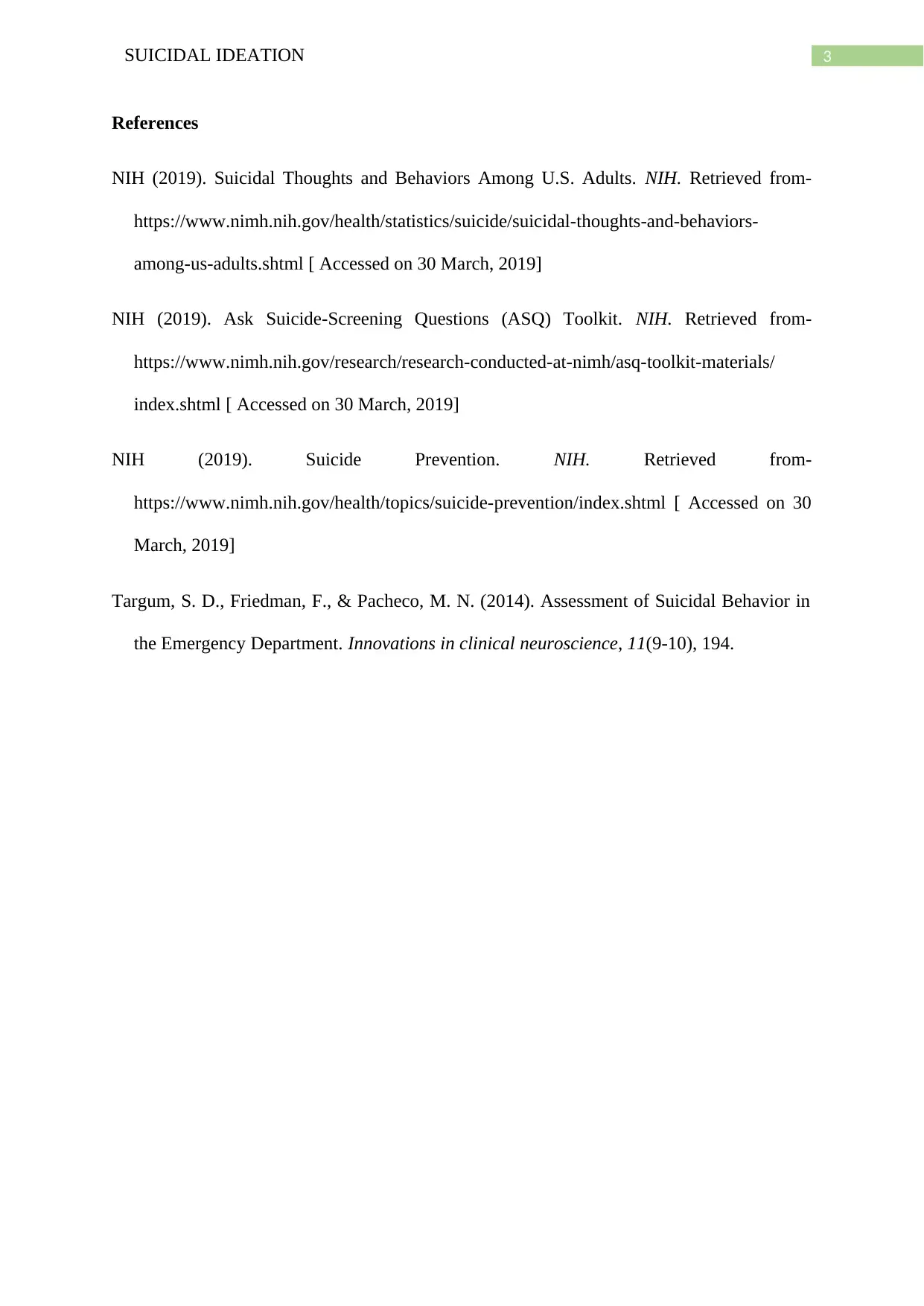Suicidal Ideation: Assessment, Tools, and Prevention Strategies
VerifiedAdded on 2023/01/10
|4
|708
|58
Homework Assignment
AI Summary
This assignment delves into the complex issue of suicidal ideation, examining its prevalence and impact on the US adult population. It addresses key aspects of assessing patients at risk, including the identification of subjective and objective data, such as rage, anger, hopelessness, and social isolation, as well as substance abuse and previous suicidal tendencies. The assignment highlights the Ask Suicide-Screening Questions (ASQ) toolkit developed by the National Institute of Mental Health (NIMH) and its application in identifying at-risk youths. Furthermore, it explores the role of organizations like Hopeline and the National Suicide Prevention Lifeline in providing resources, confidential services, and crisis intervention. The importance of regular follow-up care for patients with suicidal behaviors is also emphasized. The assignment utilizes references from the NIH to support the information provided.
1 out of 4











![[object Object]](/_next/static/media/star-bottom.7253800d.svg)